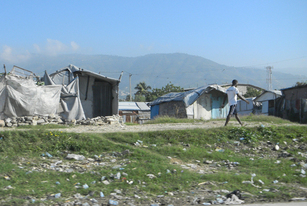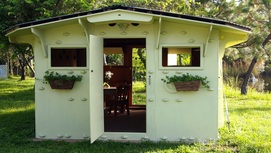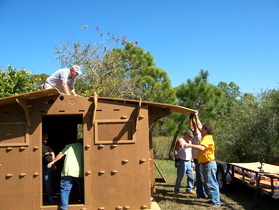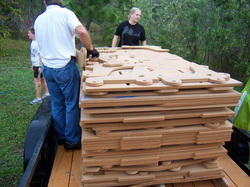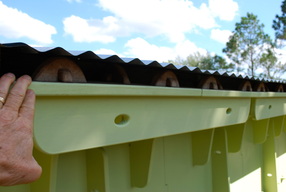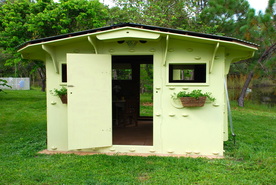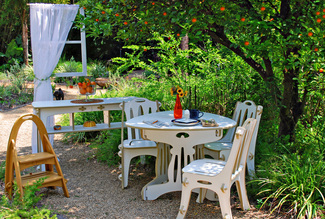
Part 4 of a 6 part series
Terrapeg is an award winning furniture line I developed first. It was the inspiration, along with the Haiti earthquake, for Shelter In A Day. It uses the same sustainable fiberboard materials, CNC cutting, and tool-free joint as the Shelter. It ships flat, is easy and even fun to assemble without tools (just the fiberboard hammer we supply), and comes in a variety of designs. We can even create a design to suit your needs. Beds, tables, chairs, student desks or church pews, in short, anything and everything you might need to furnish your new building we can supply with Terrapeg designs. This unique furniture is normally packed first on the bottom of the shipping pallet and then your building is stacked on top.
(P.S. I just finished a design for what I call…wait for it… Outhouse In A Day)

Think about what this would mean to someone, anyone in need of a place to live Now, not next month. When disaster strikes, just forklift a complete, furnished home from a central warehouse onto a standard truck, drop it anywhere it’s needed, assemble the building in a few hours, knock the furniture together, move in and lock up. This will cost less than FEMA spends just to move a trailer to a disaster site, much less than buying that trailer. Compared to trailers, an organization like FEMA will save money even if we deployed Shelter In A Day in a disaster response and then allowed them to become private storage sheds when no longer needed as immediate housing.
Shelter In A Day with Terrapeg furniture is inexpensive enough to work well with micro financing. As an example, the mortgage payment for a 7000 (US), 30 year note @7% would be just 47/month. Just think what this could mean in Africa, the favelas of Rio, Haiti or the slums of Soweto. Even furnished this is about 1.50 US a day. A furnished house for the price of a sandwich, can you imagine? Yes…we can afford to end homelessness.
What about water, power, solar? Check back next week for Part 5.
READ Part 1
READ Part 2
READ Part 3
READERS: What are your thoughts?
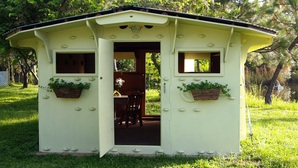
Winner of 2013 Aid and International Development Forum (AIDF) "Most Innovative Product Award." Shelter In A Day is the brainchild of eco-friendly, furniture designer Frank Schooley. Shelter's disaster recovery housing provides safe and secure, simple to construct, green homes for those displaced by natural disasters, such as hurricanes, earthquakes or floods.
The disaster shelters are a solidly constructed, termite, rust and rot resistant house, with lockable doors and windows. Homes are crafted from waterproof, recycled wood fiber material and can be easily erected anywhere, in one day.
| | |
